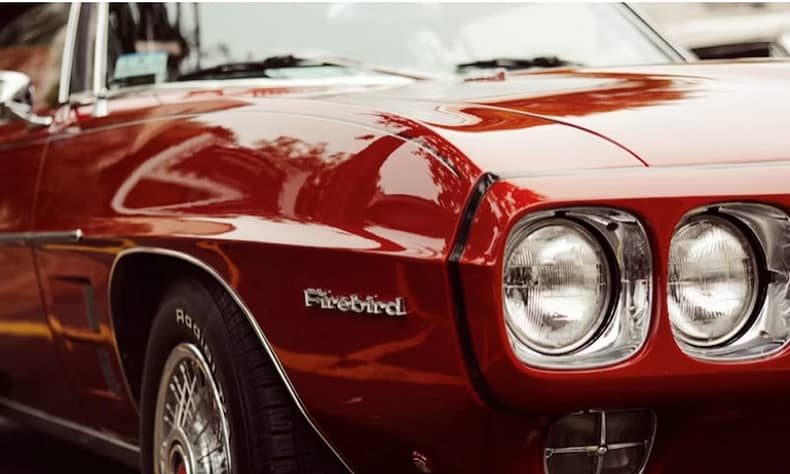
Caring for a classic car is not the same as caring for a modern vehicle. Because of the age and condition of different components, older car models require a bit more love and care than modern vehicles in order to preserve their vintage appeal and avoid the degradation of their original parts. Any vintage car collector knows that owning a classic model comes with a lot of joy, but it also comes with a lot of responsibility.
Likely, you paid more for your classic ride than its window sticker price when it was new on the showroom floor. Although cars typically depreciate the moment you drive them off of the lot, you’ve got yourself a winner, and you want to protect your investment. Follow these six industry expert tips for classic car maintenance to keep your vehicle running smoothly for years to come.
- Schedule regular checkups.
Most classic car collectors already know a thing or two about the inner workings of cars and will often do their own repairs at home, and that’s great. If you’re performing maintenance on your classic car, it’s important to have a good set of repair tools. However, it’s still a good idea to have a professional auto technician check on your car regularly. Ideally, you should have your car serviced every 6 months to a year. It’s best to choose an auto shop with technicians who have experience with vintage models.
Scheduling regular professional maintenance checkups for your vintage car will help you catch issues and get them fixed before they become bigger problems later down the road. Keep in mind that for proper classic car care, you will need to spend money on quality service checkups to make sure that it stays in good condition. You’ll also have to be mindful of spending a little extra on finding the right parts to go with your older model.
- Maintain Cleanliness
Just like a modern car, keeping a classic car clean is super important. Cleaning the car’s exterior prevents the body from rusting and otherwise corroding from dirt, oils, bird droppings, and other harmful substances. Cleaning the car’s interior is also very important, especially for classic cars that contain mostly wooden parts. Also, consider using a professional wood conditioner for such interior elements.
Keeping your vehicle clean not only makes it more comfortable, but it also helps to maintain the classy image of your car and helps increase the vehicle’s resale value. You can clean the car yourself or hire a professional auto detailing service to do the cleaning for you if you’re short on time.
Don’t skimp on vintage car maintenance by neglecting to clean your car regularly!
- Keep fluid levels in check.
One of the best ways that you can protect your classic car is to monitor its fluid levels. Low fluids can cause damage to any type of car, but they can be especially damaging to older vehicles. The following tips will help you keep your fluids at a safe level:
- Engine oil: Keeping your motor running should be your top priority. Low oil levels or old oil can cause irreversible damage to your motor in a short amount of time. Get your oil changed regularly to prevent motor damage.
- Differential oil and transmission fluid: Classic cars often require more frequent fluid changes than contemporary vehicles. Changing transmission fluid and differential oil is not as common as a regular oil change, but you should still do it regularly to keep your car running smoothly.
- Coolant: Your car’s cooling system should be flushed out once a year. Replacing the coolant in your car will prevent deposits from building up that could cause corrosion to your vehicle.
- Inspect your brakes.
Inspecting your brakes is non-negotiable for vintage car maintenance. Brakes are the most important safety feature of a vehicle. Considering the age of the classic car, the brakes are more prone to failing. Test your brakes regularly by pumping them from time to time when you take your car out for a drive. Be sure to notice if the brakes make strange noises or if anything seems different when you press down on them.
In order to protect your brakes, you should bleed your brake system once a year. Bleeding your brake system will remove any air bubbles that, if left unchecked, can reduce hydraulic pressure significantly. Hydraulic pressure is necessary to bring your car to a halt when needed. It’s also a good idea to monitor your brake pads to ensure that they are not wearing down your rotors. Pads are a relatively inexpensive item to replace. Don’t forget to rotate your tires every once in a while to even out the wear on both tires and brakes.
- Choose a good storage space.
Part of classic car maintenance is making sure that you have your vehicle stored in a safe place. Classic cars cannot withstand extreme weather like modern cars can; therefore, they have to be stored away. Exposure to direct sunlight can cause the vehicle’s paint to fade, the cold may lead to mechanical issues, and humidity can contribute to rust. The wind may blow some objects into the car, leading to dents and scratches. Snow can cause the engine to freeze; the list goes on and on.
If you want to prevent harsh weather from damaging your classic car, keep it parked in a temperature-controlled storage garage. Aside from parking your car in a storage garage, you can also cover it with a protective tarp to shield it from these harsh elements.
- Drive it regularly.
One of the best ways to maintain a classic car and keep it running smoothly is by driving it regularly. Some car collectors are hesitant to take their precious prize out on the road and would rather store it away in a garage. If a classic car stays parked in a garage for too long without being driven, some of the vehicle’s rubber parts and seals can dry up. When this happens, your vehicle will be subjected to a higher chance of leaks. Some older rubber parts can be upgraded to more durable synthetics; for example, nylon end fittings for gas struts used on hoods and hatches offer affordable, safe, and reliable lift support.
Ideally, you’ll want to take your car out for a spin once or twice a month. You don’t necessarily have to take it on long road trips when doing a few laps around the block will do just fine. Besides, what’s the point of owning a vintage car if you’re not going to drive it? That’s the best part of the experience! It’s also a great way to keep the battery charged.
Owning a classic car is a big commitment, but as long as you follow these six maintenance tips, it is certainly worth it. We hope you found this guide useful. Keep these tips in mind to make sure your car stays road-worthy for years to come.


